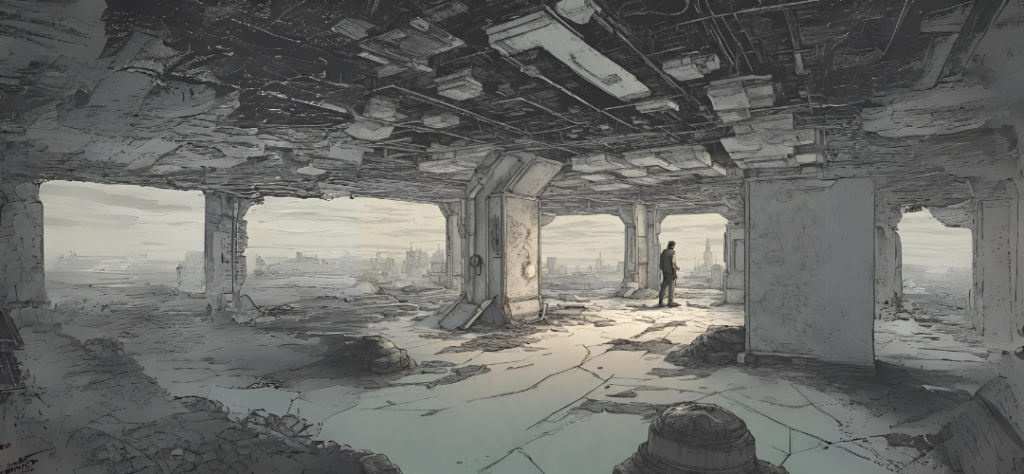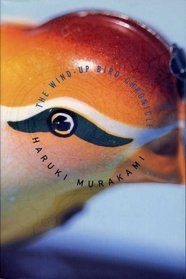
The Lonely Road:
Exploring Isolation in Dystopian Novels
In the stark landscapes of dystopian worlds, societies often teeter on the brink of collapse and the remnants of humanity struggle to survive. Examples:
- The Road by Cormac McCarthy
- The Hunger Games by Suzanne Collins
- The Giver by Lois Lowry
Within these landscapes, the prevalent theme of isolation emerges. Individuals are often left to navigate desolate landscapes, both physical and emotional.
- Station Eleven by Emily St. John Mandel
- The Stand by Stephen King
Offering a mirror into our own fears and anxieties about isolation, writers provide gripping tales of societal breakdown as well as the human psyche under extreme conditions.
From Orwell’s bleak authoritarian regimes, 1984 or Animal Farm, to Atwood’s unsettling visions of the future, The Handmaiden’s Tale, these novels not only entertain but also compel us to confront the depths of solitude and the resilience of the human spirit in the face of isolation’s relentless grip. Taking a look through these dystopian corridors lets us explore the profound impact of isolation on characters and societies. And while there are many areas of isolation (e.g. social, technological, psychological, and more), as a writer I am mostly interested in Physical and Emotional.
Physical isolation such as characters stranded on distant planets, post-apocalyptic wastelands, or those taking long-duration space travel, serves as a powerful narrative device, driving character development, exploring the human psyche under extreme conditions, and highlighting the importance of human connection in a vast and indifferent universe We all know how Mark Watney’s physical isolation on Mars forces him to rely on his ingenuity and resourcefulness to survive, leading to creative solutions and a deep exploration of his character– The Martian by Andy Weir. Frodo and Sam’s journey to Mordor in The Lord of the Rings by J.R.R. Tolkien is a tale of physical isolation as they traverse dangerous lands, testing their resilience and the strength of their friendship. Other stories like Robinson Crusoe” by Daniel Defoe, are similar where the titular character’s isolation on a deserted island leads to his transformation, as he learns to survive and grapples with his own morality. Characters can struggle for survival, test physical endurance, lose or gain sanity, evolve with problem-solving, have despair, or question values facing moral dilemmas. We can see great introspection and growth of characters using this type of tool. Additional novels like Ship of Fools (also published as Unto Leviathan) by Richard Paul Russo, or Good Morning, Midnight by Lily Brooks-Dalton reveal physical isolation changes in characters.
Emotional isolation serves as a powerful narrative device, driving character arcs, exploring themes of identity and morality, and highlighting the universal human need for connection and understanding. These are characters coping with the loss of family, friends, or entire societies or those feeling disconnected from one’s own species, society, or even reality itself. For example, Frankenstein by Mary Shelley, both Victor Frankenstein and his creation, the Creature, experience emotional isolation. Victor isolates himself due to his guilt and fear, while the Creature is rejected by society. This emotional isolation drives the novel’s tragic events. In A Wrinkle in Time by Madeleine L’Engle, Meg Murry struggles with emotional isolation and a lack of self-confidence. Her journey through time and space allows her to confront these feelings and find inner strength. Other novels include Dune by Frank Herbert, The Wind-Up Bird Chronicle by Haruki Murakami, Neverwhere by Neil Gaiman.
In my upcoming novel Trena the Memory Reader, my female protagonist is gifted with the ability to read memories. For those more worldly, educated, and having more faith, this gift represents becoming a favored of the gods, among the people. But for some, her close kin, her neighbors, the outland shepherd folk she was raised with, it signifies she is different, to be feared, having a possible curse. And so she is forced into an isolation that radically changes her life.
Here is a sample:
“Trena, daughter of Edis, stand for a hearing!” a middle-aged shamt called out from the canopy-shaded dais centralized where the residents gather for the monthly announcements. His tone, though, held no more of an answer to his request than if he held the roster of the latest chosen younglings to begin their age quest testing or if he were about to confer the planting seasons weathering report.
All eyes shifted to look at her. These days she could no more hide within the tribe than a dragon could hide amongst the horses in the pens. Her long dark hair hung, stray little wisps flowing in the crisp morning air, to frame the one-piece shaded visor she now wore across her eyes, a brooding contrast to the tanned features beneath. Yet, the strange eye covering was not the only noticeable evidence. In truth, she could never hide. A clansman of the Ipeyo people, be she a woman, man, or child, is one of us and we recognize our own. But many people did perceive her differently.
Unlike the boisterous young women raised in the isolated village, there was a stillness within her seventeen years. A lasting calm that bound the regular girlish energy with silent apathy. And when she spoke, her tone held a carefulness. And like the mountain she lived upon was built to withstand the winds and cold, she too was taller than average, strong of muscle, some say strong of mind. Although she held these traits, she was bred from the cautious shepherd folk, a reserved and lower sub-caste of the tribe.
Others noted the girl, a young woman, carried her parents’ burden of caste, living in the highest lands, they were the silent walkers among the hills, herding sheep and goats, alone on the upper reaches. Considered beneath most long before, familial generations transformed into outlying clusters away from the village proper. Several rumored their ilk were kin to the mountain itself as if they were to shift from human to not. Some say they were but seeds of the stargazers, those who read the gods and goddesses’ footprints among the dark blanket of night. Holding deeper thoughts, they followed ancient star paths, to weigh and measure. The like were withdrawn and taciturn, yet filled with faith.
Still, some saw a girl who just crossed into womanhood, with a mysterious new gift shielded only by by a shadow visor created with a Shamt’s special skills. Although the villagers could not see, she squinted out through the dark-tinted shield. Surrounded by her entire village adopting such a stance—one rabbit-skin-covered foot slightly forward, her toned arms held in front of her body, one hand clasping the other wrist—as the sun fell on her raised head. It was vaguely similar to the stance she would eventually cultivate as an adult, but in her youth, she looked taut with guardedness.
Yes, she was known. Whether reticent, low caste, careful, or strange, the new ability that arose to draw short visions of others’ memories into her own thoughts, unique and unknown was a powerful gift, assured of a god’s touch. She was a spark, taken wing from among the grounded flames, carried to the highest draft.
Perhaps her being close to where the people’s beloved god, Cavel, the Father of Horses, roamed—his cumulus towering clouds with roiling layers, serving as imagined roadways for his band of horses running so closely above—brought this one to his attention? Like the drifting dandelion seeds, with a gust of air, was she separated from all by whimsy? Was she plucked from the dust of his many tribes, to find and give her this gift? Such thoughts were not hers alone. The villagers questioned in whispers even as Trena felt embarrassed and doubted herself.
In conclusion, Dystopian novels with themes of physical and emotional isolation resonate deeply, offering a mirror to our own human experiences and fears. Whether stranded on distant planets, navigating post-apocalyptic wastelands, or grappling with alienation and loneliness, characters face the profound challenges of isolation. From the struggle for survival and the toll on mental and emotional well-being to the journey of self-discovery and the quest for connection, these novels delve into the complexities of the human condition. As a writer, we need to look through the lens of these isolated protagonists and remind the reader of our innate yearning for companionship, understanding, and the resilience of the human spirit in the face of seemingly insurmountable odds.
Please read and review my serial publishing novel, Sparrow’s Legacy, on Kindle Vella. You can read the first three chapters free on Amazon by searching for “Sparrows Legacy Kindle Vella” or clicking here. Or you can find my debut SFF novel, the space opera Drayton’s Discoveries. For the love of all fantasy and SFF, please leave a review. Feedback is my sole sustenance for writing. Don’t let me starve. If you liked this blog, please be sure to sign up for future blogs on my site jlnichauthor.com.
For those trying the writing game, I want to give a quick shout-out to PLOTTR software. I’ve found it has really improved my writing game and increased my efficiency tremendously. It is my new favorite writing aid. Use any of my affiliate links below and I might get a small commission. Thanks.
Check out my YouTube channel for PLOTTR videos @jlnichauthorsff
Joseph Michael’s Learn Scrivener Fast e-course
Please subscribe to my website if you want to be notified when I’ll be publishing or to get free samples of my work.
JL Nich, Science Fiction Fantasy Author



